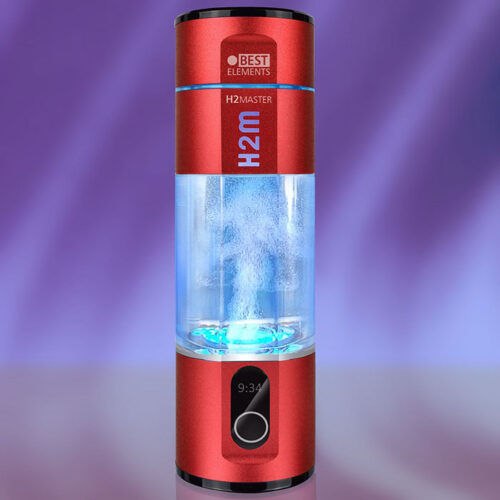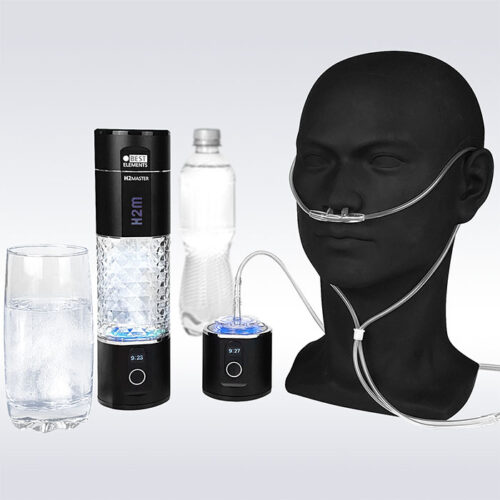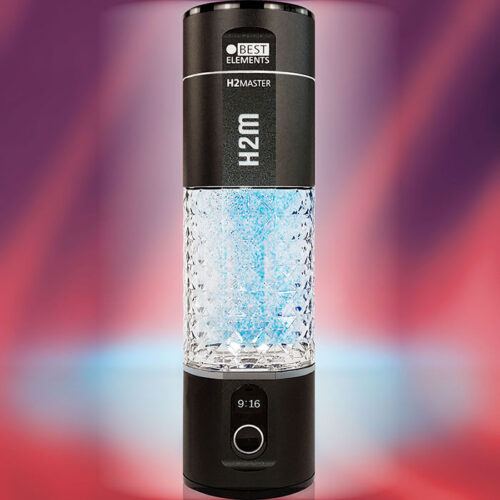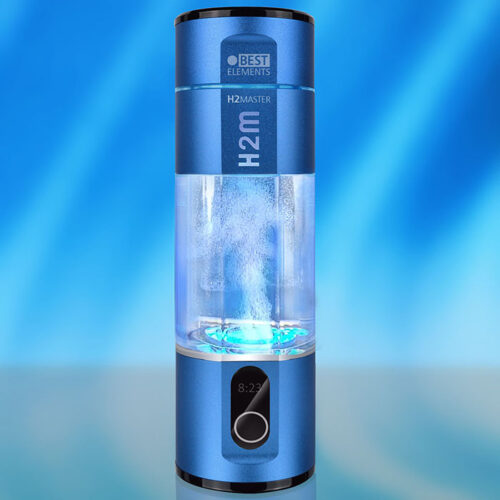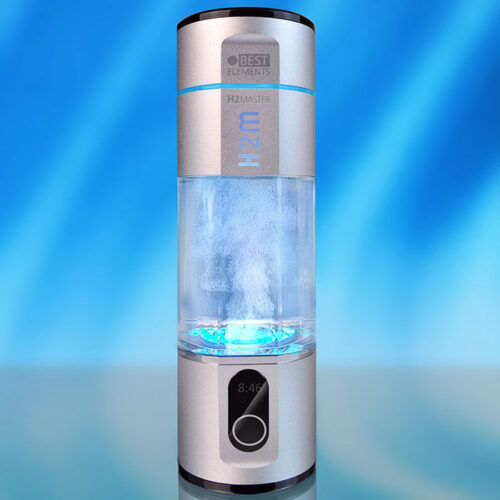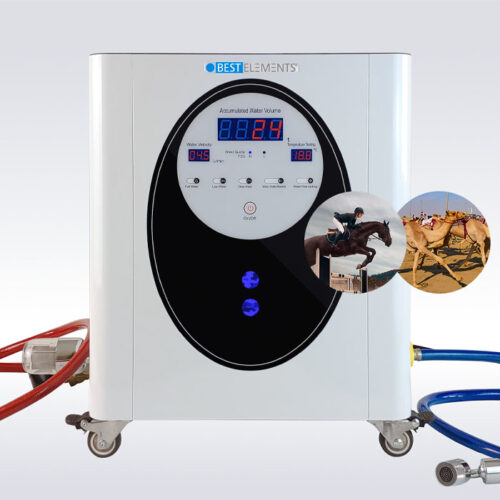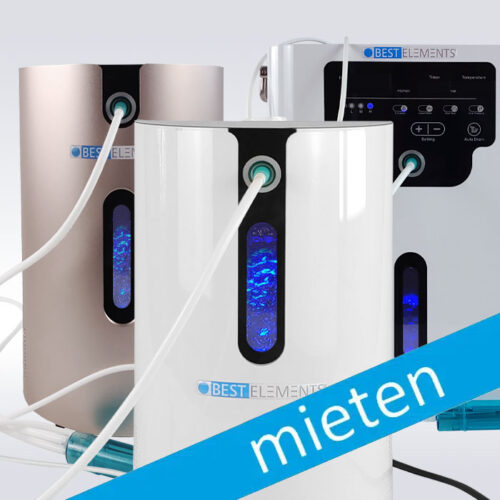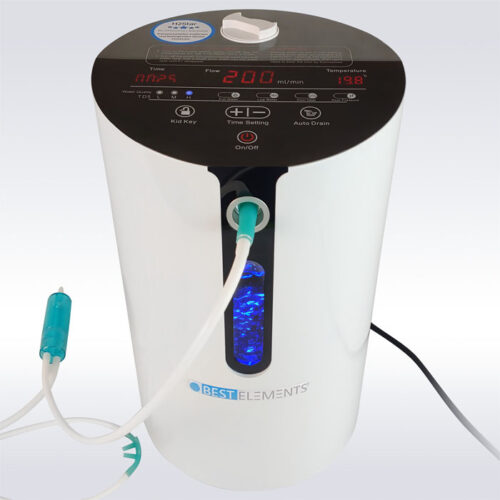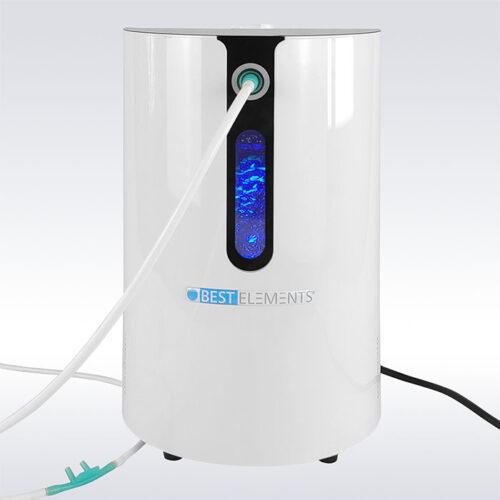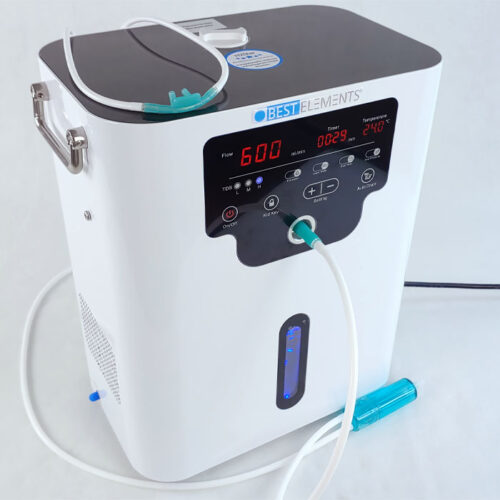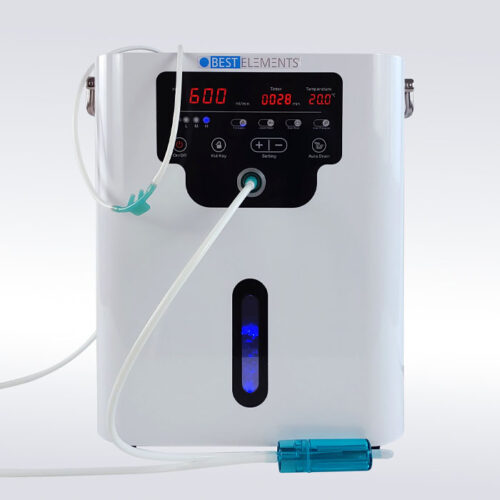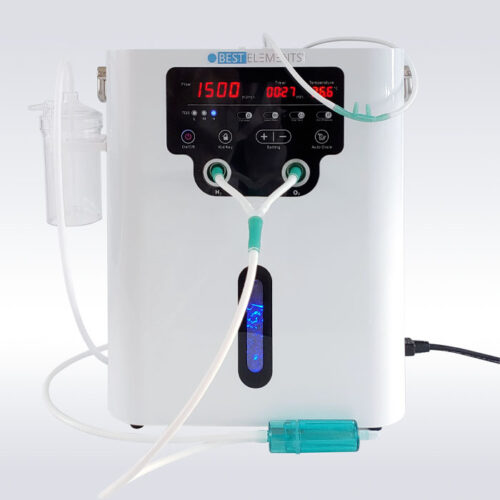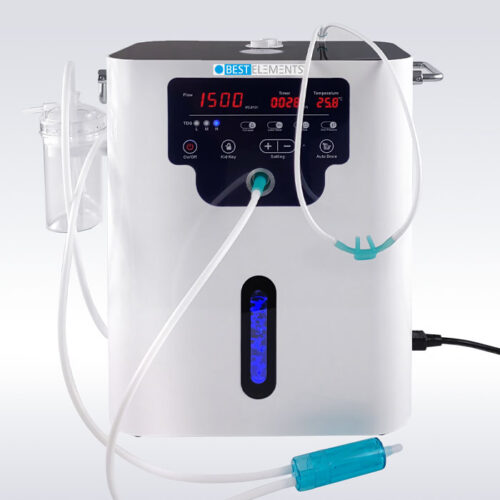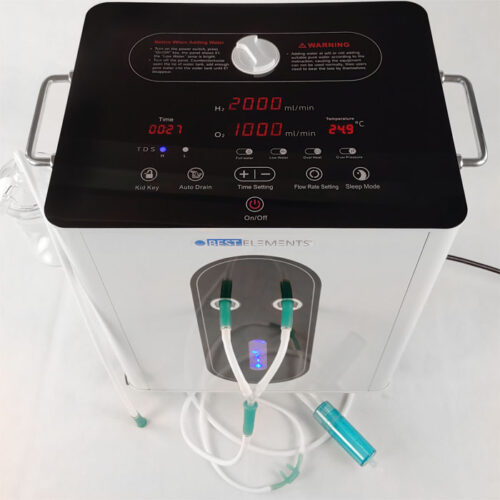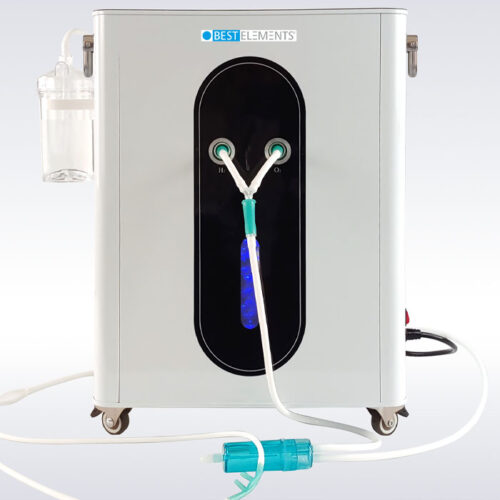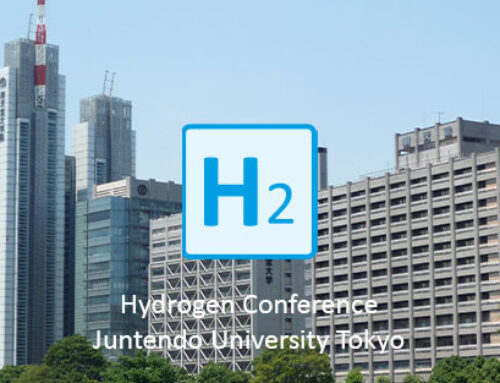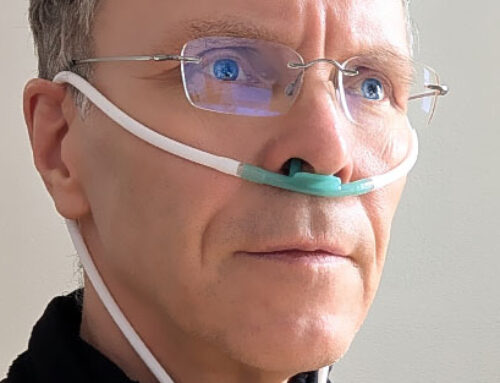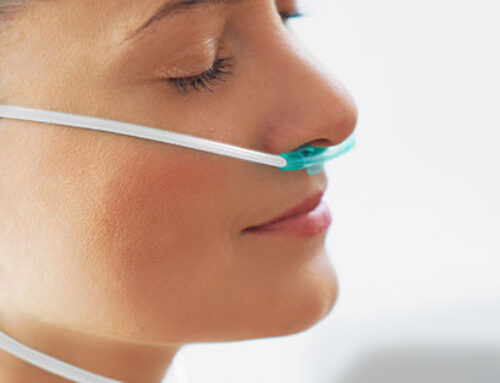Hydrogen can detoxify the body in hydrogen-rich drinking water or through inhalation
Hydrogen (H₂), whether consumed through hydrogen-rich drinking water or inhalation, is increasingly being studied for its potentially detoxifying and health-promoting properties. Research suggests that molecular hydrogen acts as an antioxidant by selectively neutralizing certain harmful reactive oxygen species (ROS) produced during oxidative stress. Here is a detailed explanation of how hydrogen can help detoxify the body:
Neutralizing harmful reactive oxygen species (ROS)
Oxidative stress occurs when the balance between free radicals (such as reactive oxygen species) and antioxidants in the body is disrupted. ROS are highly reactive molecules that can damage cells and tissues and lead to inflammation, cellular aging, and chronic diseases such as cancer, diabetes, and cardiovascular disease. ROS include molecules such as hydroxyl radicals (OH•) and peroxynitrite (ONOO⁻), which are particularly damaging.
Molecular hydrogen has the ability to specifically neutralize the most aggressive ROS, such as the hydroxyl radical, without affecting less harmful or even necessary ROS (such as hydrogen peroxide). Hydroxyl radicals can be converted to water through reactions with hydrogen, which reduces the potential damage caused by oxidative stress and has a detoxifying effect.
Reduction of inflammatory processes
Hydrogen also has anti-inflammatory properties that can contribute to detoxification. In chronic oxidative stress, the immune system becomes overactive, which can lead to persistent inflammation. This inflammation stresses the body and contributes to the accumulation of harmful metabolic products. Studies show that hydrogen reduces inflammatory cytokines and inhibits the activity of molecules such as NF-κB (nuclear factor kappa-B), which stimulate inflammatory processes.
By inhibiting these inflammatory processes, hydrogen can reduce the body’s “detoxification burden” by breaking down inflammation-related waste and cellular debris and supporting natural tissue recovery.
Supporting Antioxidant Enzymes
Hydrogen can promote the activity of the body’s own antioxidant enzymes such as superoxide dismutase (SOD), catalase, and glutathione peroxidase. These enzymes play a critical role in neutralizing free radicals and maintaining oxidative balance.
By increasing the activity of these enzymes, hydrogen supports the body’s natural antioxidant defenses. This can reduce toxic exposure and oxidative stress and facilitate the body’s cleansing process.
Supporting Mitochondrial Function and Cellular Energy
Mitochondria are the energy centers of cells and are sensitive to oxidative stress. Damage to mitochondria can impair energy production and lead to the buildup of toxic metabolites. Hydrogen protects mitochondria from oxidative stress by neutralizing harmful ROS and stabilizing ATP (energy) production. Good mitochondrial function is essential for cellular detoxification, as mitochondria are responsible for removing waste and providing energy for detoxification processes.
Acting as a signaling molecule and modulating gene expression
Hydrogen also acts as a signaling molecule that affects certain signaling pathways and modulates gene expression. Some studies show that hydrogen can activate genes related to antioxidant and detoxification mechanisms, such as Nrf2 signaling. Nrf2 (nuclear factor erythroid 2-related factor 2) is a transcription factor that promotes the production of proteins that act against oxidative stress and promote detoxification.
By activating such signaling pathways, hydrogen helps the body build a natural defense against toxins and oxidative damage and promotes self-cleaning of cells.
Benefits of inhalation vs. hydrogen-rich drinking water
Inhalation of hydrogen gas: Inhalation of hydrogen gas allows for a faster and more direct absorption of hydrogen into the blood, as the hydrogen is absorbed through the lungs and enters the circulation. This method is particularly suitable for acute oxidative stress, such as that which can occur during intense physical exertion or certain illnesses.
Hydrogen-rich drinking water: Hydrogen in drinking water is slowly absorbed through the digestive system and then enters the blood. This method is beneficial for a continuous, gentle supply of hydrogen to the body and is well suited for general health promotion and as part of a daily wellness ritual.
Both delivery methods have their own benefits and can be used depending on the health condition and individual goals.
Uses for Cancer
Hydrogen is also being studied in research as a potential tool to support cancer patients. While hydrogen itself does not destroy cancer cells, its antioxidant and anti-inflammatory properties can improve patients’ overall well-being and reduce the side effects of chemotherapy and radiation therapy. These treatments increase oxidative stress in the body, which can lead to side effects such as inflammation and fatigue.
Regular use of hydrogen-rich water or inhalation of hydrogen can lower oxidative stress and promote detoxification of the body, which can help cancer patients recover faster and improve their quality of life. Some studies have even shown that hydrogen can support apoptosis (programmed cell death) in cancer cells, however more studies are needed to fully understand the potential benefits.
Evidence of detoxification in the body
Detoxification of the body can be measured and detected in several ways, depending on what type of toxins or metabolites are being eliminated and what organ systems are being affected. Here are some methods to check the success of a detox:
Blood and urine tests
- Inflammatory markers: Measuring inflammatory markers such as C-reactive protein (CRP) and cytokines in the blood can determine whether the body has been “detoxified” at the cellular level.
- Oxidative stress and antioxidant capacity: Tests such as measuring oxidized glutathione or F2-isoprostanes in the blood provide information about the level of oxidative stress in the body.
- Liver and kidney function: Enzymes such as ALT, AST and creatinine indicate the functionality of the liver and kidneys, which are central detoxification organs.
- Metal concentrations: If heavy metal detoxification is the goal, the concentration of metals such as lead, mercury or cadmium in the blood or urine can be measured to see if their levels are decreasing.
Breath gas analysis
Certain volatile organic compounds (VOCs) in the breath, such as acetone, can indicate oxidative processes in the body. A reduction in these VOCs can indicate reduced oxidative stress.
Stool tests and microbiome analysis
Stool tests provide information about the state of the digestive system and microbiota, which are critical for detoxification. Changes in microbiome composition and a reduction in inflammatory markers can be an indication of successful detoxification.
Antioxidant enzyme analysis
Measurements of the activity of antioxidant enzymes such as superoxide dismutase (SOD), catalase and glutathione peroxidase indicate how well the body is able to neutralize free radicals.
Reduction of symptoms and well-being
A less measurable but still important method of evaluating detoxification is symptom improvement. Successful detoxification can lead to a reduction in fatigue, headaches, skin problems and other symptoms that are often associated with toxic exposure.
Bioresonance therapy
Bioresonance therapy is an alternative treatment method that aims to measure and influence the body’s electromagnetic vibrations. It is based on the theory that every cell and organ has specific vibrations or “frequencies” and that diseases are caused by “disturbed vibrations”. Bioresonance therapy is intended to detect these disturbed frequencies and “correct” them with electromagnetic vibrations. From a scientific perspective, bioresonance therapy is controversial.
There is still no scientifically sound evidence to prove its effectiveness. Controlled, randomized studies have yet to be conducted. Regardless, users report positive experiences.
Toxins in the body that are eliminated during detoxification?
The body can accumulate various types of toxic substances (also called “poisons”) over time. These can enter the body through environmental exposures, lifestyle, diet or medications and become deposited in tissues and organs. A “detox” can aim to reduce some of these harmful substances. Here are some of the main categories of toxins found in the body and can be eliminated through detoxification processes:
Heavy metals
- Mercury: Found in fish (especially predatory fish such as tuna) and dental fillings (amalgam); can affect the nervous system.
- Lead: Found in old water pipes, paint and batteries; can damage the kidneys and nervous system.
- Cadmium: Found in cigarette smoke and certain foods (e.g. seafood); damages the kidneys and lung tissue.
- Arsenic: Found in polluted water or certain foods such as rice; can damage the skin, nervous system and blood vessels.
- Aluminum: Found in food packaging, cosmetics and drinking water; is linked to neurological diseases such as Alzheimer’s.
Environmental toxins and industrial chemicals
- Pesticides and herbicides: Commonly found in conventional fruits and vegetables; can have hormonal and neurological effects.
- Polychlorinated biphenyls (PCBs): Previously used in electrical equipment, but also found in contaminated soil and water; are potentially carcinogenic.
- Dioxins: Formed during combustion processes and can be ingested through food; affect the immune system and liver.
- Flame retardants (PBDEs): In upholstered furniture, electronics and carpets; can cause endocrine disruption and neurotoxic effects.
Organic solvents
- Benzene: Found in industrial exhaust fumes and cigarette smoke; can damage bone marrow and increase the risk of leukemia.
- Toluene and xylene: In paints, varnishes and cleaning products; can affect the central nervous system.
- Formaldehyde: In furniture, building materials and some cosmetics; irritates the respiratory tract and can be carcinogenic.
Drug residues
- Antibiotics: Long-term accumulation of antibiotics in the body can disrupt the microbiome and promote resistance.
- Painkillers (NSAIDs): Frequent use can put a strain on the liver and kidneys.
- Psychotropic drugs: Can be stored in fatty tissue for a long time and affect the nervous system.
- Hormones and steroids: Residues of hormone preparations can disrupt the endocrine system and affect hormone balance.
The body’s own metabolic waste products
- Uric acid: A byproduct of purine metabolism that can lead to gout in high amounts.
- Ammonia: A toxic byproduct of protein breakdown; is normally converted to urea in the liver and excreted via the kidneys.
- Lactic acid: Accumulation can lead to muscle tension and fatigue, especially with excessive physical exertion.
Additives and preservatives in food
- Artificial colors: Can promote allergic reactions and hyperactive behavior in children.
- Preservatives (e.g. nitrites and sulfites): Can cause allergic reactions and other health problems.
- Artificial sweeteners: Some, such as aspartame, are controversial and may have neurotoxic effects.
- Trans fats: Can increase the risk of heart disease.
Alcohol and tobacco toxins
- Acetaldehyde: A toxic intermediate formed when alcohol is broken down in the liver and can cause liver damage.
- Nicotine and tar: Toxic substances from tobacco smoke that damage the lungs and are carcinogenic.
Bacterial and viral toxins
- Lipopolysaccharides (LPS): Toxins released by gram-negative bacteria in the gut that can promote systemic inflammation.
- Endotoxins: Released when bacteria die and can increase inflammation and immune responses in the body.
- Viral waste products: Viruses can leave behind toxins and viral particles that burden the immune system and lead to chronic inflammation.
Drugs
- Cocaine
- Cannabis
- Amphetamine
- Methamphetamine
Detoxification of the body is a complex process, as different toxins are stored in different tissues. Heavy metals, pesticides, organic solvents and drug residues are among the most common toxins that burden the body. To promote detoxification, targeted measures such as an adapted diet, drinking water with hydrogen, liver and kidney support and, in some cases, medical detoxification therapies can be useful.
While some toxic substances are relatively easily excreted through the kidneys, liver or microbiome, others, such as heavy metals and certain environmental toxins, require more targeted measures and often long-term detoxification approaches to reduce their residues in the body.
Powerful hydrogen generators for everyday use overview
Mobile hydrogen boosters with high performance values for better personal performance
The following powerful hydrogen boosters, hydrogen filters for hydrogen-rich drinking water and hydrogen inhalers for inhaling hydrogen are very suitable for everyday use, they are certified and reliably supply our body cells with this valuable elixir of life.


